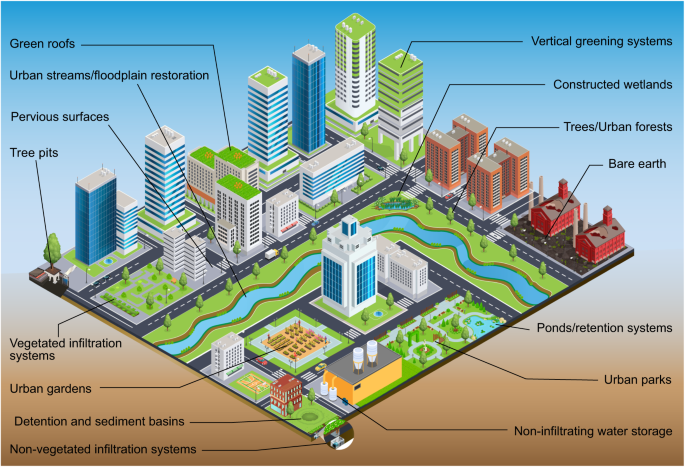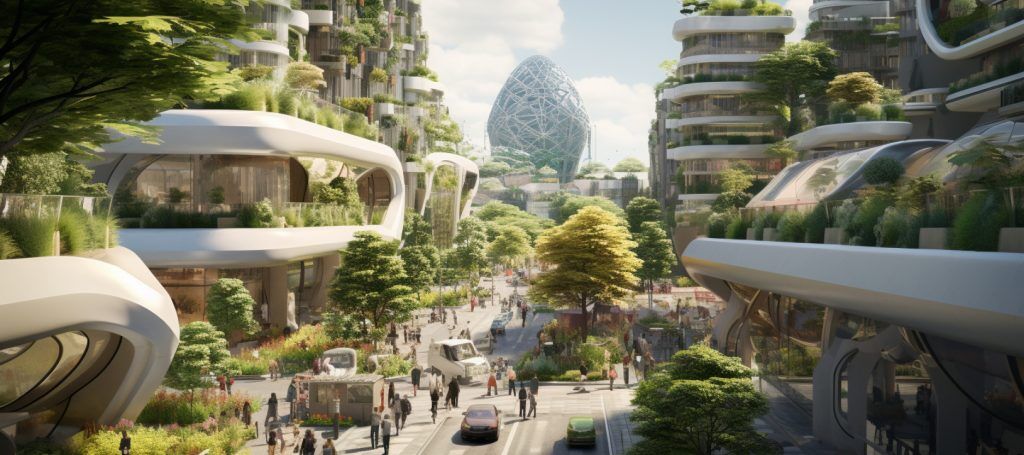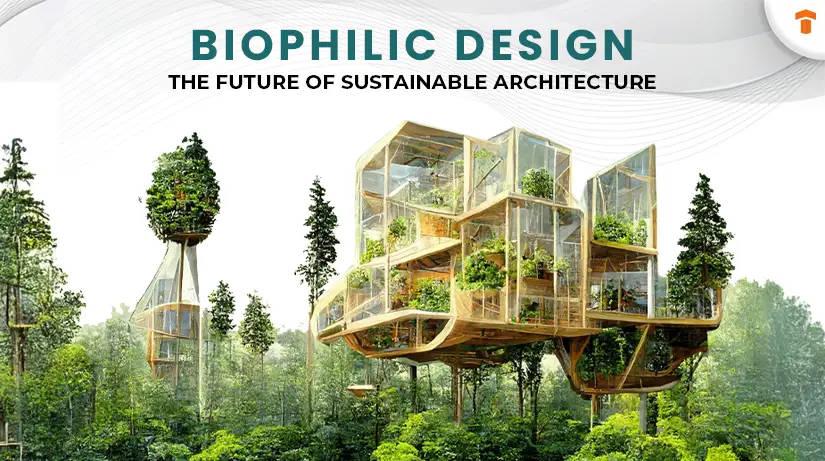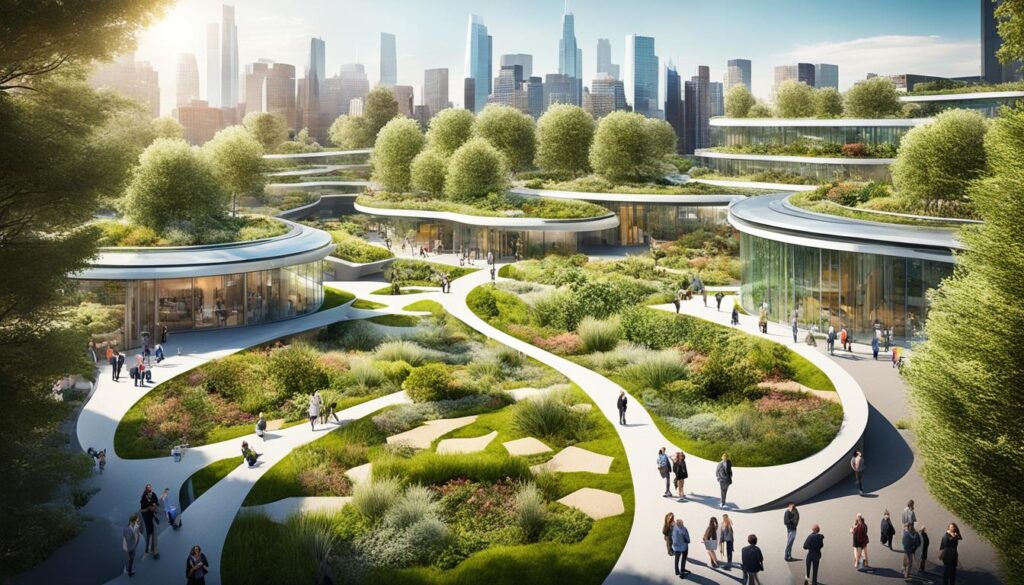Transforming Cities with Smart Green Infrastructure: A Comprehensive Guide
In an era characterized by urbanization that challenges our environment, Smart Green Infrastructure has emerged as a crucial solution. This innovative approach integrates nature into urban landscapes, providing numerous benefits such as improved air quality and enhanced biodiversity.
Components such as green roofs and rain gardens play a vital role in mitigating urban heat and effectively managing stormwater runoff. It is essential to explore the significance of Smart Green Infrastructure, its key elements, implementation strategies, and success stories that illustrate its transformative potential for cities around the globe.
Why Is Smart Green Infrastructure Important?
Smart Green Infrastructure (SGI) plays a critical role in transforming urban environments into sustainable habitats that prioritize ecosystem services and enhance urban ecology.
By integrating nature-based solutions within urban planning, cities can effectively address significant challenges such as climate resilience, water management, and the mitigation of heat island effects.
This innovative approach not only reduces carbon footprints but also promotes biodiversity, fosters community engagement, and improves the quality of life for urban residents.
Moreover, adopting environmentally sustainable practices in urban design can lead to the development of more livable cities, ensuring accessibility to green spaces and enriching the overall urban experience.
What Are the Benefits of Smart Green Infrastructure?
Smart Green Infrastructure (SGI) offers numerous benefits that significantly contribute to environmental sustainability and urban livability. By integrating nature-based solutions such as green roofs, rain gardens, and permeable pavement, cities can enhance ecosystem services, which support biodiversity and facilitate effective stormwater management.
These environmentally friendly practices play a vital role in improving air quality and water conservation, effectively mitigating urban heat island effects and enhancing overall climate resilience.
Plus these benefits, SGI initiatives such as urban forestry and community gardens create essential green spaces that foster connections between residents and the natural environment. Urban forests serve as natural air filters while providing habitat for various species, thereby enhancing local biodiversity.
Community gardens enable neighborhoods by promoting local food production, reducing food deserts, and encouraging stewardship of green spaces. Features like green walls not only enhance the aesthetic appeal of buildings but also contribute to improved air quality by filtering pollutants.
Collectively, these practices strengthen urban resilience, rendering cities more sustainable and healthier for future generations.
What Are the Components of Smart Green Infrastructure?
The components of Smart Green Infrastructure (SGI) consist of a diverse array of elements that function synergistically to improve urban ecology and promote sustainability.
Essential components include:
- Green roofs, which enhance thermal performance;
- Rain gardens, which facilitate effective stormwater management;
- Permeable pavement, which supports water-sensitive urban design.
Furthermore, bioretention systems, urban trees, and various forms of vegetation play a crucial role in promoting biodiversity and creating habitats for wildlife.
The integration of smart technology, such as sensors and data analytics, further enhances the monitoring and maintenance of these systems.
1. Green Roofs
Green roofs represent a vital component of Smart Green Infrastructure, offering substantial advantages for urban heat mitigation and biodiversity enhancement. By integrating vegetation on rooftops, these systems enhance thermal performance, thereby reducing energy consumption and fostering opportunities for renewable energy within urban environments.
There are several types of green roofs, including extensive, semi-intensive, and intensive green roofs, each designed to meet specific building requirements and urban contexts.
- Extensive green roofs typically feature low-growing plants that necessitate minimal maintenance.
- Intensive green roofs can accommodate a broader array of plant species and even small trees, thereby creating vibrant green ecosystems.
The implementation of green roofs in cities such as Chicago and Toronto has not only contributed to cooler urban climates but has also improved urban biodiversity by providing habitats for various species. Additionally, these roofs play a significant role in mitigating the heat island effect, underscoring their importance in enhancing energy efficiency and overall urban health.
2. Rain Gardens
Rain gardens are specifically designed to manage stormwater effectively while providing essential ecosystem services within urban environments. These bioretention features not only enhance water conservation by facilitating the percolation of rainwater into the ground but also contribute positively to improved water quality and biodiversity in urban design.
The implementation of rain gardens enables cities to mitigate the risks associated with flooding and erosion, particularly during heavy rainfall events. The design principles typically incorporate a layered structure comprising soil, gravel, and native plants, which filter pollutants while promoting the natural hydrology of the area.
For instance, Portland, Oregon, has successfully integrated rain gardens across various neighborhoods, demonstrating significant reductions in stormwater runoff. Furthermore, these gardens attract pollinators and support urban wildlife, thereby benefiting local ecosystems.
Research indicates that communities equipped with green stormwater infrastructure, such as rain gardens, often experience enhanced property values and increased recreational opportunities, underscoring their integral role in sustainable urban planning.
3. Permeable Pavement
Permeable pavement is a critical component of Smart Green Infrastructure that enables effective water-sensitive urban design. By permitting rainwater to infiltrate through various surfaces, permeable pavements assist in flood management and enhance soil health, thereby contributing to overall urban resilience.
These innovative systems are available in multiple forms, including permeable concrete, porous asphalt, and interlocking pavers, each specifically engineered to facilitate natural water absorption and minimize runoff.
The advantages of permeable pavements extend beyond hydrological benefits; they also promote urban mobility by providing safer walking and biking surfaces, which encourages residents to adopt environmentally friendly transportation alternatives.
Case studies from cities such as Philadelphia and Seattle have illustrated the efficacy of these technologies in addressing stormwater challenges and fostering community engagement around green spaces.
In conclusion, these systems are essential for bolstering urban resilience as they effectively respond to the challenges posed by climate change.
4. Bioretention Systems
Bioretention systems play a critical role in effective stormwater management within the framework of Smart Green Infrastructure. These systems are specifically designed to filter and manage runoff, thereby enhancing environmental sustainability.
Additionally, they provide essential wildlife habitats and support the implementation of green infrastructure policies.
By employing a combination of soil, plants, and microbes, these systems emulate natural processes to improve water quality. The design components, including drainage layers and vegetation, function synergistically to capture pollutants while allowing treated water to gradually infiltrate into the ground.
In the context of urban planning, bioretention systems are significant as they contribute to flood mitigation and alleviate the burden on stormwater management systems. This creates resilient cities capable of adapting to climate challenges.
Policies that advocate for the adoption of bioretention systems encourage collaboration between developers and environmentalists, representing a forward-thinking approach to urban development and ecological stewardship.
5. Urban Trees and Vegetation
Urban trees and vegetation represent essential elements of Smart Green Infrastructure, offering a wide array of ecological and social benefits. They enhance biodiversity, contribute to the reduction of carbon footprints, and play a critical role in advancing environmental justice by improving access to green spaces for all community members.
These natural assets not only filter pollutants and enhance air quality, but they also provide cooling shade and mitigate the urban heat island effect, thereby increasing the livability of cities. Urban greenery promotes public health by encouraging physical activity and improving mental well-being, in addition to enhancing property values and urban aesthetics.
Successful urban forestry initiatives, such as tree adoption programs and community gardens, have demonstrated the ability to revitalize neighborhoods, strengthen social connections, and increase public engagement in ecological projects.
By investing in these green initiatives, cities can create healthier and more attractive environments that benefit the entire community.
How Does Smart Green Infrastructure Help the Environment?
Smart Green Infrastructure (SGI) offers a comprehensive strategy for tackling a range of environmental challenges encountered by urban areas.
Through the implementation of nature-based solutions, SGI effectively mitigates the urban heat island effect, improves air quality, and promotes efficient management of stormwater runoff.
Furthermore, these practices enhance biodiversity and diminish the environmental repercussions of urban development, thereby contributing to the establishment of healthier ecosystems.
1. Reduces Urban Heat Island Effect
The incorporation of Smart Green Infrastructure allows cities to significantly mitigate the urban heat island effect, which enhances climate resilience and improves the quality of life for residents. Elements such as green roofs, urban trees, and reflective materials play a crucial role in heat island mitigation, effectively reducing ambient temperatures and energy consumption.
Research indicates that strategically planted urban trees can lower surrounding temperatures by as much as 10°F, providing not only shade but also contributing to evaporative cooling. Additionally, green roofs have been shown to decrease rooftop temperatures by up to 40°F, leading to reduced energy costs associated with cooling buildings.
Successful implementations in cities such as Chicago have demonstrated a notable reduction in surface temperatures, with decreases of up to 5°F over time. This evidence underscores the environmental and economic benefits of investing in Smart Green Infrastructure elements.
By transforming urban landscapes with these innovative solutions, cities can foster a more sustainable future and promote healthier urban living environments.
2. Improves Air Quality
Smart Green Infrastructure plays a vital role in enhancing air quality within urban environments by reducing pollution and promoting the overall health of city ecosystems. The implementation of vegetation, green walls, and trees not only serves to filter harmful pollutants but also provides habitats for wildlife, contributing to a more sustainable urban design.
This strategic approach to urban planning effectively mitigates the heat island effect, resulting in cooler and more breathable environments.
Cities such as New York and Singapore have successfully integrated green roofs and urban forests into their landscapes, leading to significant reductions in particulate matter and greenhouse gases.
These initiatives not only improve air quality but also promote the mental well-being of residents. Research has demonstrated that urban populations surrounded by greenery report lower levels of stress and enhanced respiratory health, thereby positioning Smart Green Infrastructure as an essential component in the development of sustainable and livable cities.
3. Manages Stormwater Runoff
Effective stormwater management represents a significant advantage of Smart Green Infrastructure, employing innovative design strategies to control runoff and enhance environmental sustainability. By integrating features such as rain gardens and permeable surfaces, municipalities can manage stormwater more effectively, thereby reducing the risk of flooding and improving overall water quality.
The incorporation of green roofs, bioswales, and retention ponds further enhances these methods, creating a comprehensive approach that not only mitigates flood risks but also promotes biodiversity.
For example, a case study conducted in Portland, Oregon, illustrates how urban planners utilized bioretention systems to capture and treat stormwater, resulting in a reduction of peak flow rates by up to 50%. Such successful implementations not only relieve pressure on conventional drainage systems but also encourage groundwater recharge, ultimately fostering healthier ecosystems and sustainable urban landscapes.
4. Enhances Biodiversity
Smart Green Infrastructure (SGI) significantly enhances urban biodiversity by creating habitats that support a diverse range of wildlife species and promote urban ecology. Through the strategic planning of parks, community gardens, and green corridors, municipalities can restore ecosystems while ensuring accessibility to green spaces for all residents.
This innovative approach not only fosters a thriving environment for pollinators such as bees and butterflies but also encourages the presence of birds and small mammals, thereby enhancing the overall ecological balance.
Successful biodiversity initiatives are evident in urban areas where green roofs and vertical gardens have been implemented, providing essential nesting sites and food sources for local wildlife.
For instance, cities like Toronto have adopted these strategies, resulting in notable increases in both native plant populations and wildlife diversity. This effectively demonstrates how well-planned SGI projects can lead to sustainable urban ecosystems that benefit both nature and community well-being.
How Can Cities Implement Smart Green Infrastructure?
The implementation of Smart Green Infrastructure (SGI) necessitates a strategic approach that encompasses effective city planning, community engagement, and comprehensive green infrastructure policies.
Urban areas must utilize smart technology and data analytics to optimize infrastructure investments, ensuring that the benefits of SGI are maximized while promoting collaboration among all stakeholders involved.
1. Incorporating Smart Green Infrastructure into City Planning
The integration of Smart Green Infrastructure into urban planning is crucial for the development of sustainable city environments that emphasize eco-friendly practices. By incorporating elements such as sustainable transportation options, integrated planning methodologies, and thoughtful urban design, cities can strategically allocate infrastructure investments to maximize environmental benefits.
This integration not only improves the quality of life for residents but also mitigates the adverse impacts of climate change. Consequently, effective city planning should aim to harmonize urban growth with sustainability objectives, ensuring that new developments include green spaces, renewable energy sources, and efficient water management systems.
For example, cities such as Copenhagen and Singapore have successfully implemented Smart Green Infrastructure by utilizing green roofs, urban forests, and permeable pavements to effectively manage stormwater. These case studies illustrate how urban design that embraces these technologies can reduce urban heat, promote biodiversity, and support local ecosystems, ultimately contributing to the creation of resilient urban landscapes.
2. Partnering with Private Companies and Organizations
Establishing partnerships with private companies and organizations is essential for advancing Smart Green Infrastructure initiatives and promoting sustainable business practices. Such collaborations can effectively leverage financial resources and expertise to enhance community resilience while fostering sustainable design in urban environments.
By integrating the strengths of both sectors, it becomes possible to develop innovative solutions that address critical urban challenges, including climate change and infrastructure strain.
For example, successful collaborations in cities such as Singapore have illustrated how public-private partnerships can facilitate the implementation of eco-friendly transportation systems and green building designs. Projects that incorporate green roofs and sustainable drainage systems not only enhance the aesthetic appeal of urban areas but also contribute to improved biodiversity and a reduction in the urban heat island effect.
These initiatives serve as a testament to how synergistic efforts can yield tangible benefits for communities, making a compelling case for continued investment in such cooperative endeavors.
3. Educating and Engaging the Community
Educating and engaging the community is essential for the successful implementation of Smart Green Infrastructure, as it enables residents to adopt sustainable practices and advocate for improved urban spaces. Through educational programs and community initiatives, municipalities can cultivate a sense of ownership over local food systems and public spaces, thereby enhancing overall community resilience.
To achieve this objective, it is imperative to implement outreach strategies that actively involve residents in decision-making processes. Hosting workshops, informational sessions, and interactive community events fosters participation and ensures that individuals feel valued in the development of their environment.
For example, a successful community-driven project may involve a neighborhood garden where local residents collaboratively decide on plant selections and garden maintenance, resulting in increased biodiversity and enhanced green spaces.
Furthermore, utilizing social media platforms can significantly amplify awareness and gather diverse input from a broader audience, ensuring that perspectives from various segments of the community are incorporated into participatory planning.
Ultimately, these strategies not only build trust but also promote sustainable practices that yield benefits for all stakeholders involved.
What Are Some Examples of Successful Smart Green Infrastructure Projects?
Numerous successful Smart Green Infrastructure projects worldwide exemplify the advantages of incorporating sustainable design into urban environments.
These initiatives underscore the potential for urban revitalization, demonstrating the positive effects of green infrastructure on community well-being and environmental sustainability.
1. The High Line in New York City
The High Line in New York City serves as an exemplary model of urban renewal, having transformed an abandoned rail line into a vibrant public park that illustrates the advantages of Smart Green Infrastructure. This elevated green space significantly enhances community engagement while improving accessibility to green areas for both residents and visitors.
Plus its welcoming pathways and lush vegetation, the High Line exemplifies a collaborative design process that is heavily informed by community input and environmental considerations. As the park meanders through various neighborhoods, it fosters social connections among diverse groups and acts as a sanctuary for numerous plant and animal species, thereby contributing to urban ecology.
The success of the High Line has catalyzed local economic revitalization by attracting new businesses and stimulating tourism, which further underscores the effective integration of green spaces into metropolitan environments.
Moreover, the sustainable practices incorporated into its maintenance serve as an inspiration for cities worldwide to adopt similar models, highlighting the critical role of urban parks in promoting community well-being and ecological resilience.
2. The Chicago Green Alleys Program
The Chicago Green Alleys Program exemplifies an effective strategy for stormwater management through the incorporation of permeable pavement and green infrastructure within urban planning. This initiative not only demonstrates a commitment to environmental sustainability but also mitigates flooding and fosters community engagement by transforming alleys into functional green spaces.
By repurposing underutilized areas, the program enhances both the local ecosystem and the aesthetic appeal of neighborhoods. Metrics indicating the program’s success include a reduction of over 2.5 million gallons of stormwater runoff annually and the active involvement of numerous local communities in the maintenance of these green spaces.
Through workshops and collaborative projects, residents have been enableed to participate in the transformation process, cultivating a sense of ownership and pride in their surroundings. This innovative approach serves as a model for similar urban initiatives, illustrating how sustainable design can yield significant environmental and social benefits.
3. The Cheonggyecheon Stream Restoration Project in Seoul, South Korea
The Cheonggyecheon Stream Restoration Project in Seoul, South Korea, represents a significant urban revitalization initiative that has successfully transformed a previously buried stream into a vibrant public space. This project exemplifies the advantages of green infrastructure and ecosystem restoration, promoting community engagement and enhancing biodiversity.
Through a meticulously crafted design that harmonizes urban requirements with ecological considerations, the project has not only elevated the aesthetic quality of the area but has also established an essential green corridor within the thriving metropolis.
By actively engaging local communities in both the planning and implementation phases, stakeholders ensured that the project accurately reflected the aspirations and needs of the residents. The restored stream functions as a crucial habitat for various species, contributing to biodiversity in the context of urban development.
Its importance extends beyond recreational opportunities; it serves as an exemplary model of sustainable urban planning, inspiring cities around the globe to adopt similar initiatives that promote environmental health and social connectivity.
4. The Green Infrastructure Plan in Portland, Oregon
Portland, Oregon’s Green Infrastructure Plan exemplifies a strong commitment to sustainable practices by integrating Smart Green Infrastructure throughout the city to enhance community resilience. This comprehensive plan highlights the significance of green spaces, rain gardens, and urban trees in improving urban design and infrastructure investment.
By strategically incorporating these elements into urban development, the city not only enhances its aesthetic appeal but also addresses critical issues such as stormwater management and air quality improvement.
A notable project, the East Bank Esplanade, illustrates how well-designed green spaces can serve as connective pathways between neighborhoods, promoting active transportation while providing habitat for local wildlife.
Initiatives like the “Green Streets” program have effectively transformed traditional roadways into eco-friendly corridors, thereby improving drainage and reducing the risks of flooding.
These efforts contribute significantly to the environmental health of the area and foster a sense of community ownership and pride, thereby demonstrating how effective urban planning can lead to substantial social benefits.
Frequently Asked Questions
What is Smart Green Infrastructure?
Smart Green Infrastructure is a system of technology, natural resources, and sustainable practices that work together to promote environmental and economic benefits.
How does Smart Green Infrastructure benefit the environment?
Smart Green Infrastructure helps mitigate the effects of climate change by reducing pollution, controlling stormwater runoff, and providing natural habitats for wildlife.
What are some examples of Smart Green Infrastructure?
Examples of Smart Green Infrastructure include green roofs, rain gardens, permeable pavement, and urban trees. These elements help to conserve energy, reduce air pollution, and improve water quality.
How does Smart Green Infrastructure benefit communities?
Smart Green Infrastructure can improve the health and well-being of communities by providing access to green spaces, reducing the urban heat island effect, and promoting physical activity.
What role does technology play in Smart Green Infrastructure?
Technology plays a crucial role in Smart Green Infrastructure by providing real-time data and monitoring for better decision-making, efficient management, and maintenance of green infrastructure elements.
How can I incorporate Smart Green Infrastructure into my community?
There are many ways to incorporate Smart Green Infrastructure into your community, such as implementing green infrastructure projects, promoting sustainable transportation options, and educating community members about the benefits of green infrastructure.

I’m Bruno, an architect with a deep passion for Biophilic Design in Urban Architecture. Throughout my career, I’ve focused on integrating natural elements into urban planning, and I created this site to share my insights and foster a deeper understanding of how biophilic principles can significantly enhance urban living. Dedicated to sustainable development, I continually explore innovative design solutions that promote both environmental and human well-being in city landscapes.














Publicar comentário